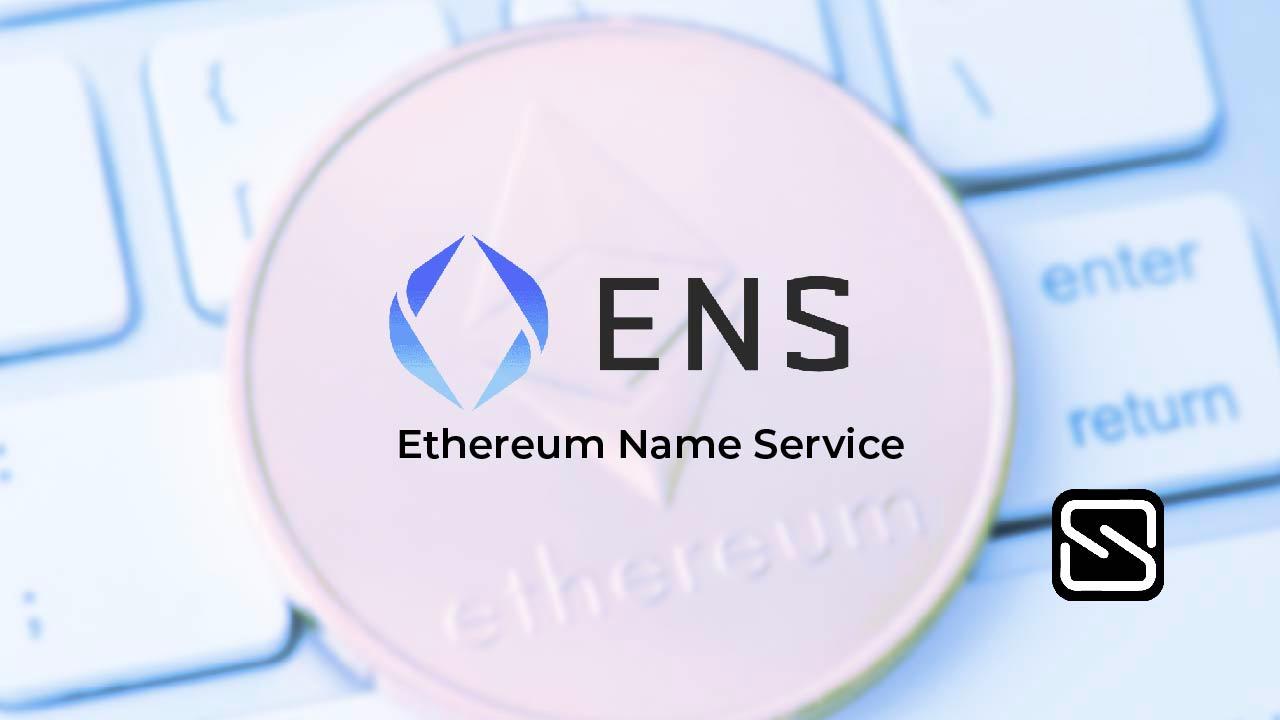What Is the Ethereum Name Service (ENS)?
To access a site in the early days of the internet, you had to punch in the IP address, which was a long string of numbers that were difficult to remember and practically impossible to predict. Then came human-readable names, which made it easier for regular people to navigate the internet. Cryptocurrency is still in […]
By Staff
To access a site in the early days of the internet, you had to punch in the IP address, which was a long string of numbers that were difficult to remember and practically impossible to predict. Then came human-readable names, which made it easier for regular people to navigate the internet. Cryptocurrency is still in the IP address phase, which means that users must use long, difficult-to-remember addresses to get to the pages they want. This is where the Ethereum Name Service comes into the picture. It aspires to make crypto as simple to use as surfing the web.
The Ethereum Name Service (ENS) is a lookup service for the Ethereum blockchain. It associates data with a certain individual. It’s not simply an Ethereum-only naming service; it’s an Ethereum-based naming service. It provides a safe and decentralized method of addressing resources with human-readable names. It’s a completely decentralized domain name provider that lets anyone buy and administer domains. As a result, instead of sending ETH or ERC20 tokens to “8e866f012fb8fb…”, you might transfer them to “realsatoshi.eth.”
ENS has similar goals to DNS, the Internet’s Domain Name Service, but has significantly different architecture due to the capabilities and constraints provided by the Ethereum blockchain. Like DNS, ENS operates on a system of dot-separated hierarchical names called domains, with the owner of a domain having full control over subdomains.
The Ethereum Foundation’s Nick Johnson and Alex Van de Sande spearheaded the early development of the ENS.
The initiative distributed ENS tokens to users of the service in November 2021 and created a decentralized autonomous organization, or DAO, to run it. (True Names Limited is the legal entity linked to the DAO.) ENS token holders can use their assets in the same way that corporation shareholders can; they can decide on price, protocol updates, and how money is managed inside the treasury.
The use of ENS tokens also helped the initiative move away from grants as a funding source. On cryptocurrency exchanges, ENS tokens can be traded for US dollars or other cryptocurrencies, giving the project’s developers a financial lifeline.
The ENS is constructed on Ethereum’s smart contracts, which makes it more secure, private, and censorship-resistant than the internet’s Domain Name Service (DNS). The team behind ENS believes that internet naming infrastructure should be open, decentralized, community-driven, and non-profit. On a technological level, the ENS can leverage the Ethereum ecosystem, which means it is extremely programmable and capable of interacting with other smart contracts beyond naming.
Unlike some of its competitors, ENS does not want to replace DNS. The ENS is primarily concerned with enabling distributed, reliable name resolution for Web3 resources like blockchain addresses and distributed content. Namecoin, Blockstack, and Handshake, on the other hand, are attempting to replace DNS.
ENS is made up of two smart contracts behind the hood. The ENS registry keeps track of all domains and subdomains, as well as the owner’s information and a link to the Resolver, a smart contract that performs name-to-address or other resource conversions and vice versa.
ENS works in a similar way to the DNS on the Internet, with a hierarchical architecture that gives the domain owner complete control for all subdomains. So wallet.realsatoshi.eth and email.realsatoshi.eth can be created using realsatoshi.eth.
How to get an ENS domain
You can search for available domain names using an Ethereum wallet like MetaMask by visiting manager.ens.domains. Once you’ve chosen a domain, the system will guide you through the registration process, which will need you to confirm two transactions from your wallet. You’ll also need to decide how long you want to register a domain for, with a $5.00 yearly rental fee (paid in ETH). As the domain owner, you may now configure the various addresses and information that you wish that name to link to, as well as any subdomains.
What can ENS be used for?
Replacing your long, unreadable Ethereum address with a nice, memorable ENS address like realsatoshi.eth is the best thing you can do with ENS. This enables receiving crypto assets and entering your ENS address into Ethereum dapps much easier without having to copy and paste the long public address.
Apart from that, the decentralized web is based on ENS’s collaboration with the IPFS file storage system. You may search a directory of decentralized websites at almonit.eth, which is a wonderful place to start. You can use MetaMask to visit this site as it is written, or you can use.link to add decentralized websites and access them without MetaMask or special browsers, owing to their efforts in bridging Web3 and the internet’s DNS.
ENS is more than just.eth. Sites with any of the more than 1,300 top-level domain names—such as those ending in.com,.org, or.edu—were able to integrate directly with ENS starting in 2021. If you own realsatoshi.org, you can link it to realsatoshi.eth so that visitors can browse information while also sending money to the same address.
You can try ENS out for yourself now by using the ENS Manager App.
